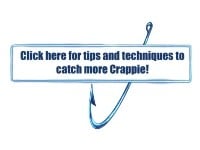Unlike traditional sonar sending out a single echo (ping) and the sonar unit waiting for the return of the echo; live sonar uses phased array scanning sonar made up of beams that can track fish or show lifelike structure or cover continuously. However, unlike traditional sonar the transducer of live sonar can be changed to result in a different viewing image.
I have extensive experience with Lowrance ActiveTargeting so I will be using their imaging and mine to illustrate views. Notice that there are differences between beam widths and frequencies between the live sonar units. Also note the shaft of a trolling motor or shaft of a pole mount have similar results excepting being able to isolate the where the transducer scans.
The most popular mode for live sonar viewing when crappie fishing is Forward View. In Forward View mode an angler can manually select the Forward Range and Down Range. In Forward View the Down Range can also be set in Auto Range where the sonar unit sets the depth to maximize the screen size for best viewing.
In Lowrance Forward View the beam is an oblong shape focused outward slightly below the trolling motor to out in front of the boat. The distance is set by the angler and will go outward till the beam goes out and returns at the set distance, reflects from bouncing off the shoreline or disappears off the edge of the screen.
Forward View is popular because it allows the angler to see what is ahead or even off to either side of the boat by turning the trolling motor shaft. Not only see whatís ahead, but also the entire water column. In other words, suspended crappie not relating to any cover can be seen, in addition to crappie in a brush pile can be seen. Locating crappie, bait fish, cover and structure before spooking off a crappie or letting the crappie know there is an angler trying to catch them overhead. Of course it also shows anglers where to make the most productive cast.
In Lowrance Down View the beam is an oblong shape focused directly under the boat towards the back of the boat to a short distance in front of the boat. Unlike Forward View the main viewing area is directly under the boat. In most situations that means the crappie will have to be in deep water to use this view without spooking the fish having a boat overhead.
In Lowrance Scout View the beam is a live wide view of 135 degrees, but with a narrow 15 degree overall beam. This means you can see what is around in front of the boat/transducer instantaneously in a high resolution view. There is one limit to this mode and thatís how far out it can reach compared to Forward View. Nevertheless being able to see baitfish, gamefish, cover and structure instantaneously allows a crappie angler to cast to targets.
Ghost 360 Mode is the newest release from Lowrance (www.lowrance.com). The software update allows users with a Lowrance Ghost Trolling Motor and the Lowrance Active Imaging 3-in-1 Nosecone to see a 360 degree view of the bottom. A high resolution frequency is used to show where baitfish, game fish, cover and structure is located. Like Scout View itís most effective in shallower water.
Viewing modes are changed by adjusting the transducer on the shaft mount that comes with the transducer and module. An additional mount is included for mounting on the trolling motor.
In all of the viewing modes of the Lowrance ActiveTargeting anglers can adjust several settings to maximize the imaging appearing on sonar screen. Popular adjustments are increasing the contrast to make the fish, cover and structure ďpopĒ more. That means itís brighter than if on the default setting of the unit.
I normally have my contrast set to 79%. Thatís on Ozark highland reservoir Beaver Lake renown for having clear water. This allows for an increase in contrast setting, however, I will also set the Noise Rejection to Low to filter out some of the clutter that happens with the increase of contrast.
One other tip is when fishing for suspended fish to change the Down Range to shallower than the actual bottom depth. In other words, set the Depth Range to 20 feet when actually in 30 feet of water when chasing roamers since you are targeting suspended fishing in less than 20 feet of water. This will fill the screen making it easier to see the lure and game fish.




 Articles and Stories
Articles and Stories

















vBulletin Message